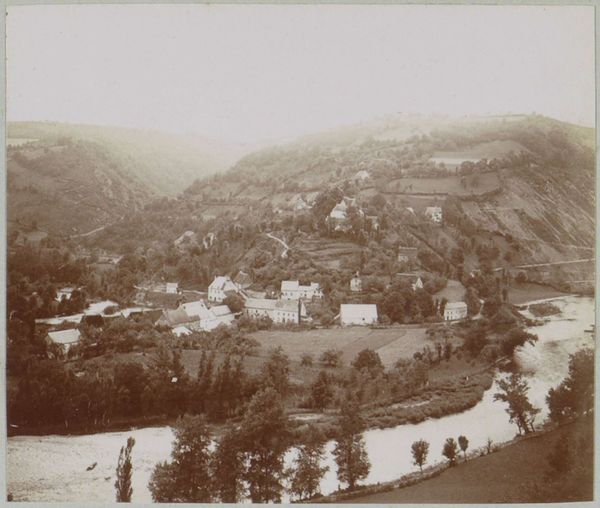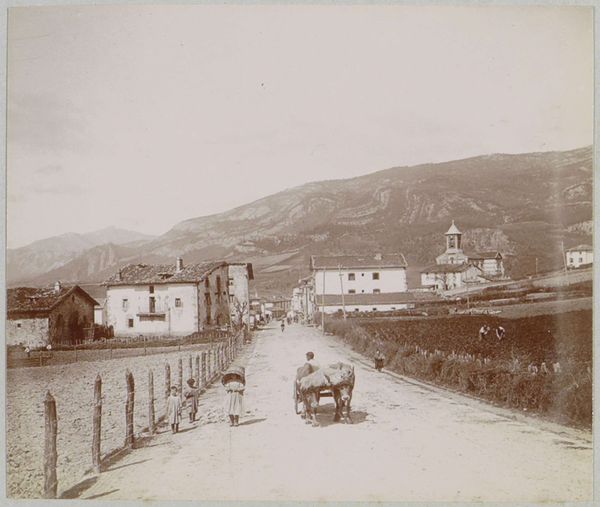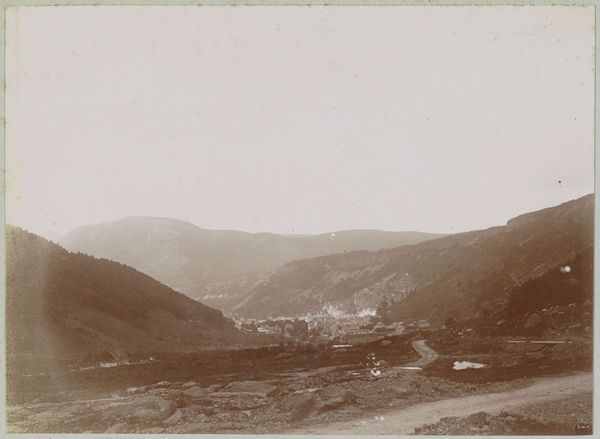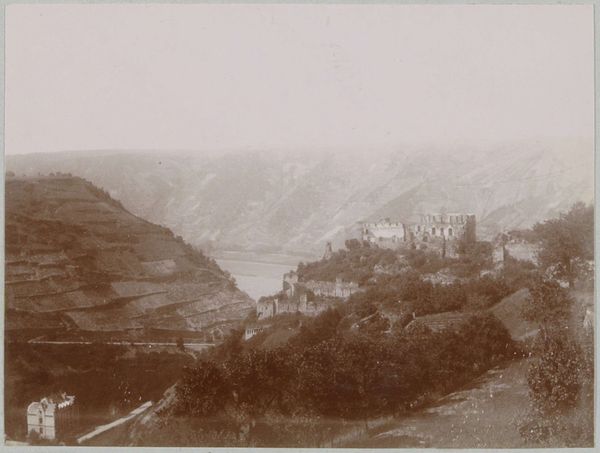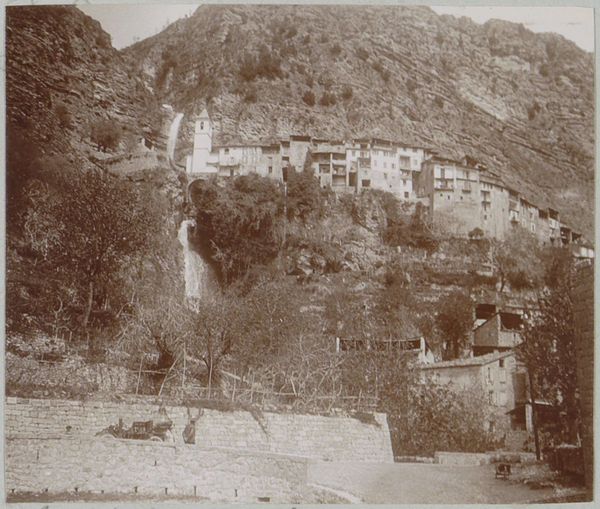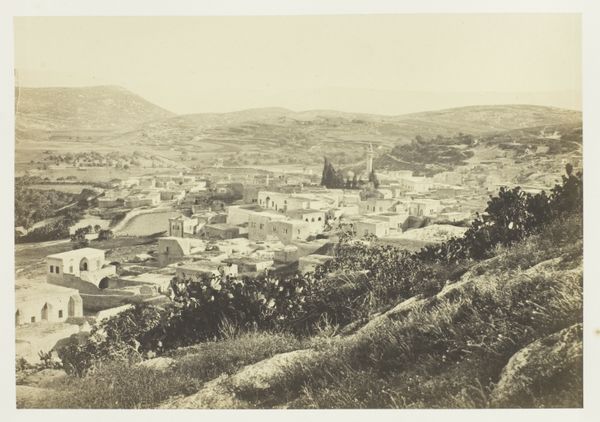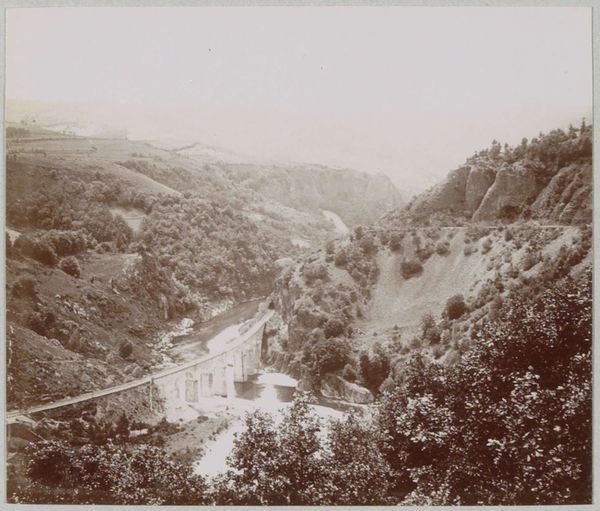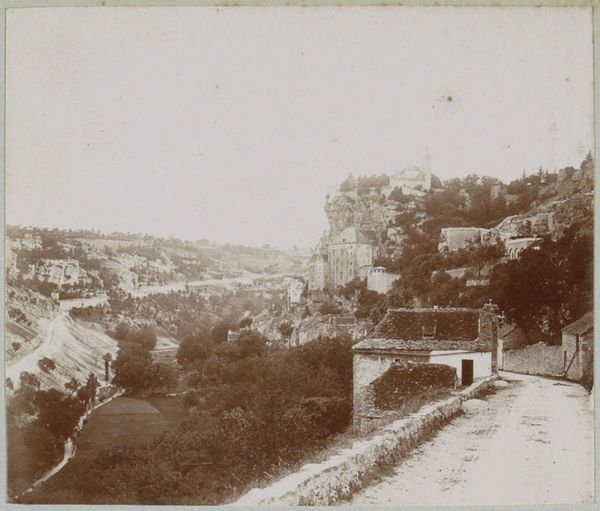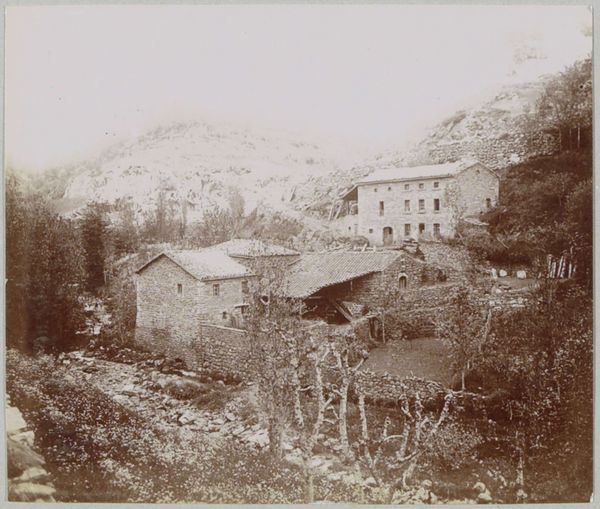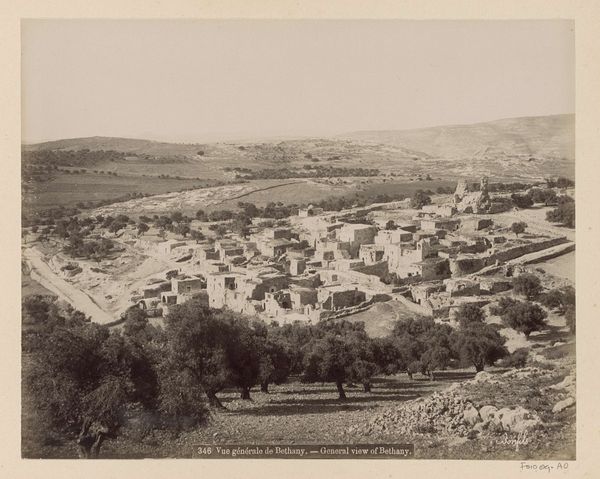
print, photography
#
pictorialism
# print
#
landscape
#
nature
#
photography
#
cityscape
Dimensions: height 69 mm, width 82 mm
Copyright: Rijks Museum: Open Domain
Curator: Delizy's 1903 photograph, "Gezicht op Entraygues-sur-Truyère," offers a tranquil view of the town, captured through the soft lens of pictorialism. It resides here at the Rijksmuseum. Editor: My first impression is how textured everything feels – from the stone bridge and the buildings clustered on the hillside, to the almost velvet-like shadows. There’s a real emphasis on the physicality of the town and landscape. Curator: Indeed. That bridge for example functions as a crucial symbol of connection, physically uniting the two sides of the river, and psychologically uniting past and present. The layered hill behind, marked by agriculture, speaks to cycles of nature and the persistent, unwavering rhythms of life in this community. Editor: Right, and looking closer, you can see the evidence of human labor everywhere – the stacked stone of the walls, the terraced fields carved into the hillside. This wasn't a naturally occurring vista; it was consciously shaped by the people who live here. What kind of printing technique do you think this is? Curator: Knowing Delizy's interests, it’s most likely a process that would have given him great control over the image. Perhaps a gum bichromate or platinum print. The tones are deliberately muted. The entire image takes on the tone of nostalgia. There is also something romanticized in this pictorialist style. Editor: Absolutely. And consider what that aesthetic choice might mean. By softening the details and evoking a sense of timelessness, Delizy, and the Pictorialists more generally, elevated photography to something akin to painting, legitimizing it as fine art. They deliberately suppressed the mechanical nature of image making. Curator: Exactly, that manipulation becomes itself a part of the meaning. This photograph shows the place, yes, but its deeper subject is the passing of time and what parts of that past Delizy felt were valuable or timeless. Editor: And how that perceived timelessness was in itself constructed through material manipulation and a very particular approach to production. Thank you, I now see so much more in this image. Curator: My pleasure. It's photographs like these that allow us to feel the passage of time in a uniquely poignant way, understanding that any image captures an historical reality with the deliberate human element inherent in any process.
Comments
No comments
Be the first to comment and join the conversation on the ultimate creative platform.
